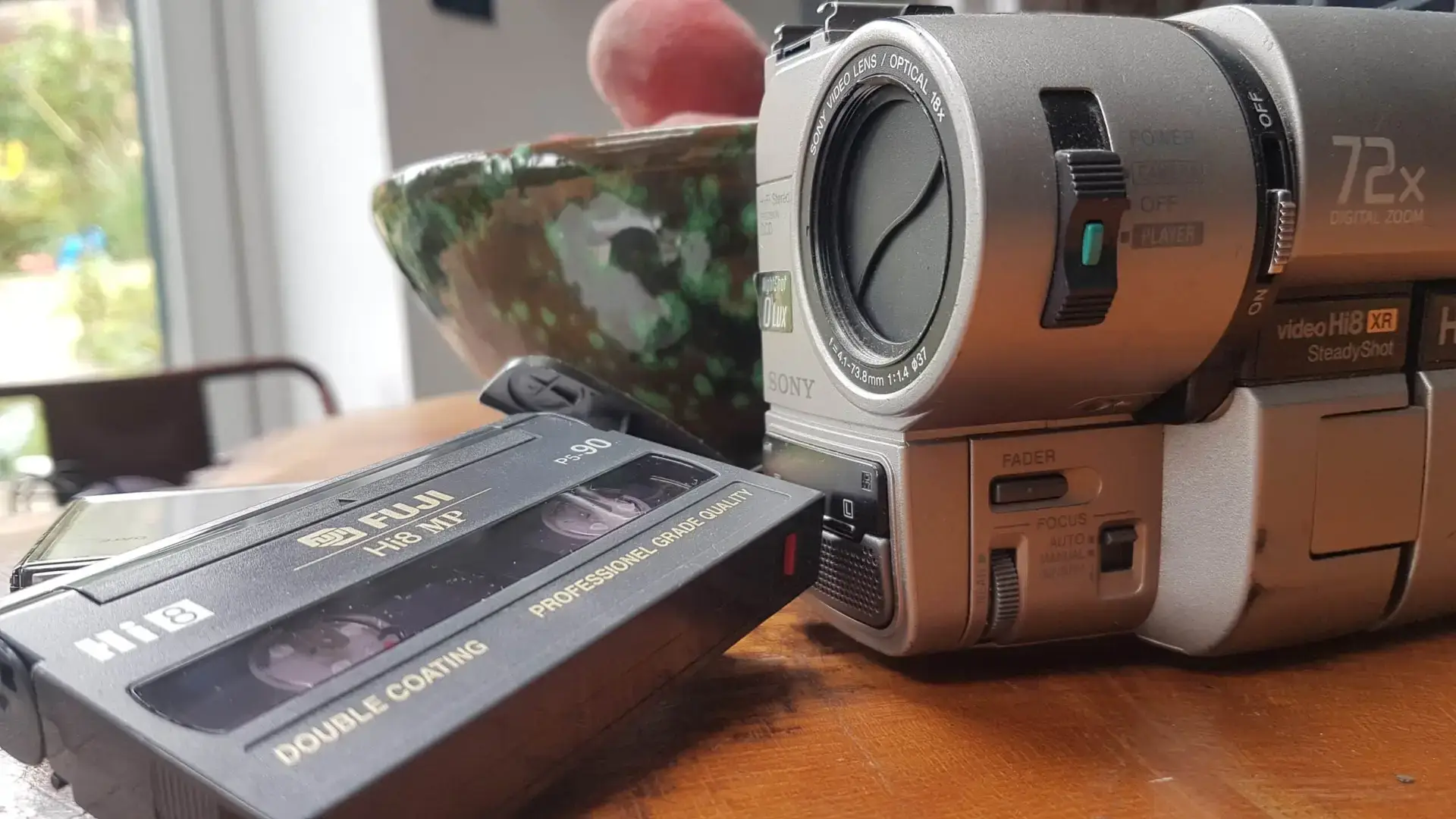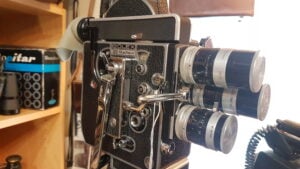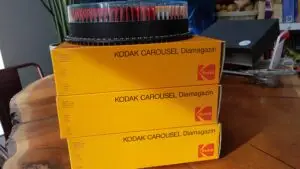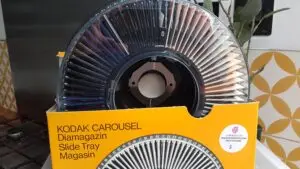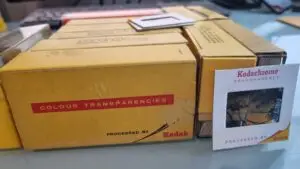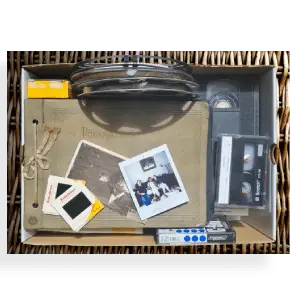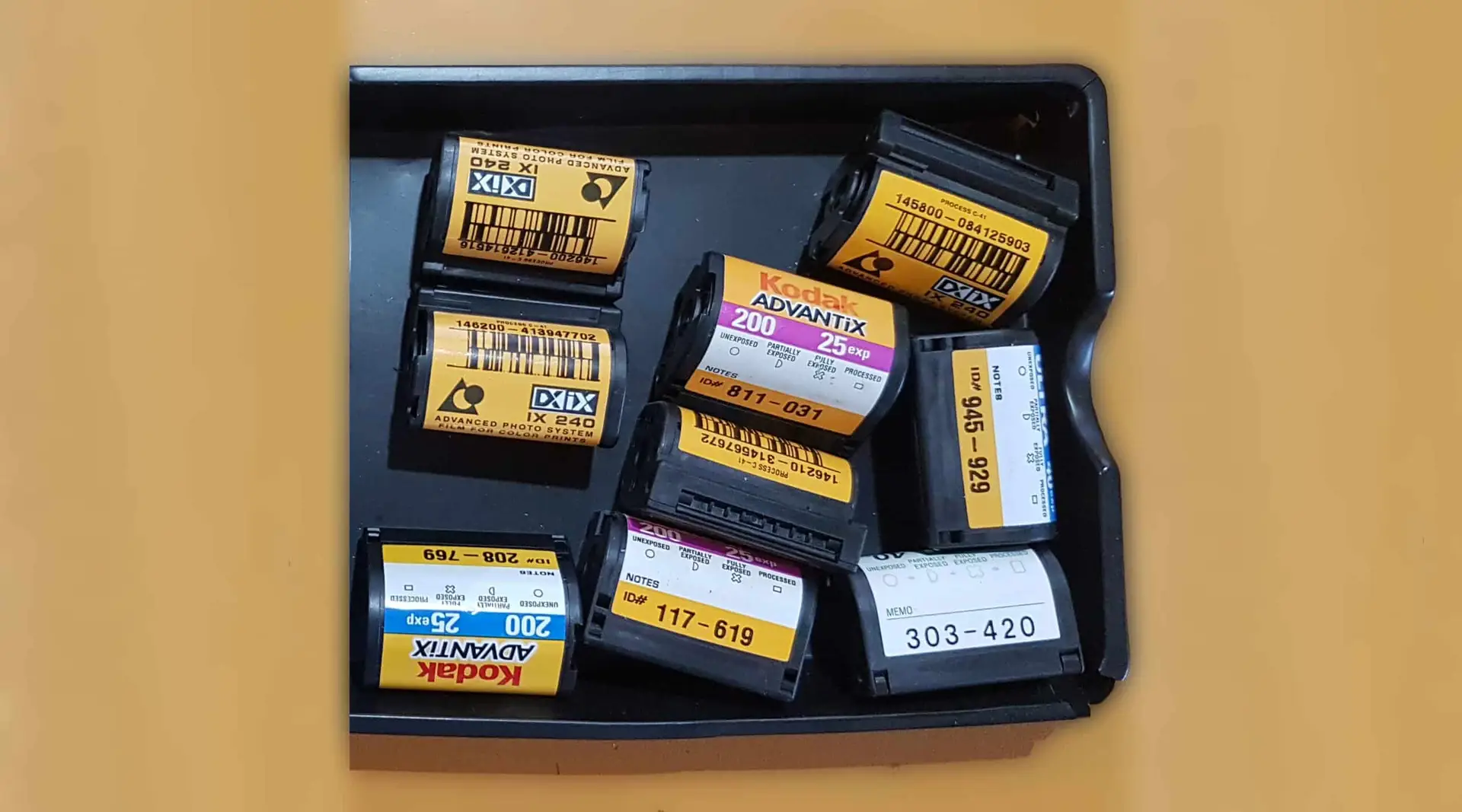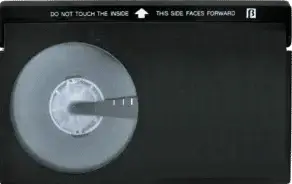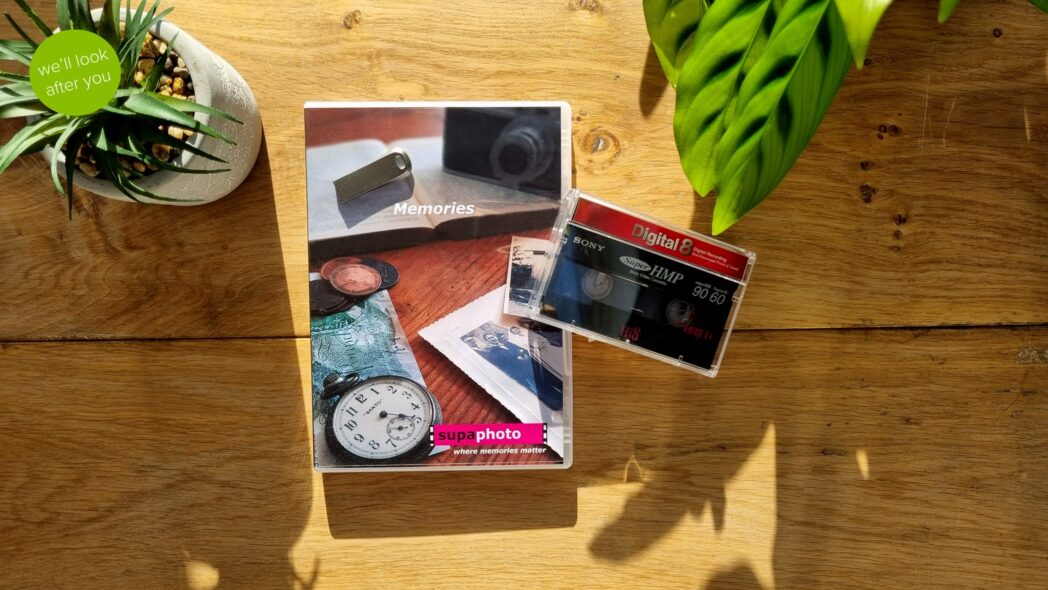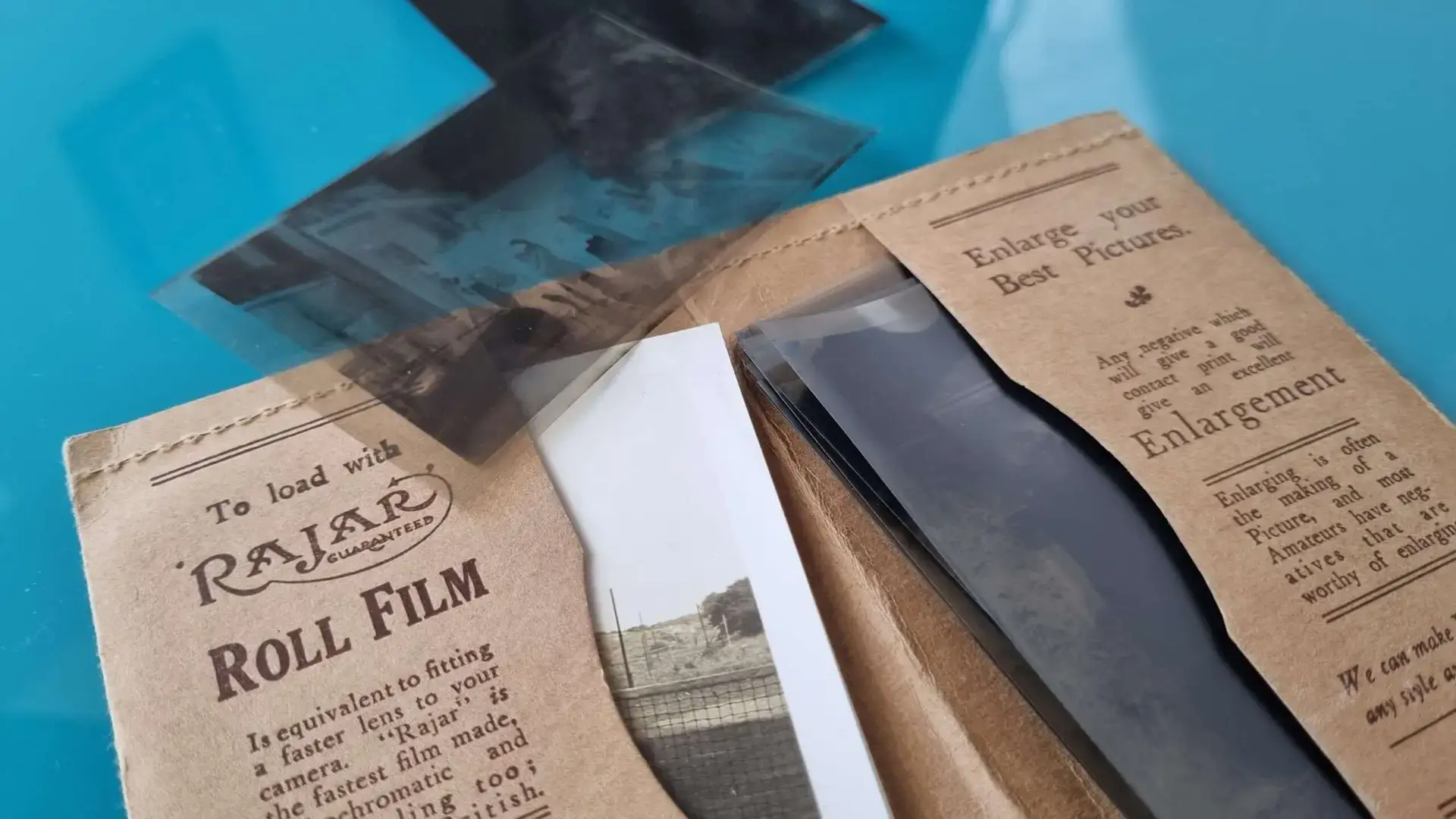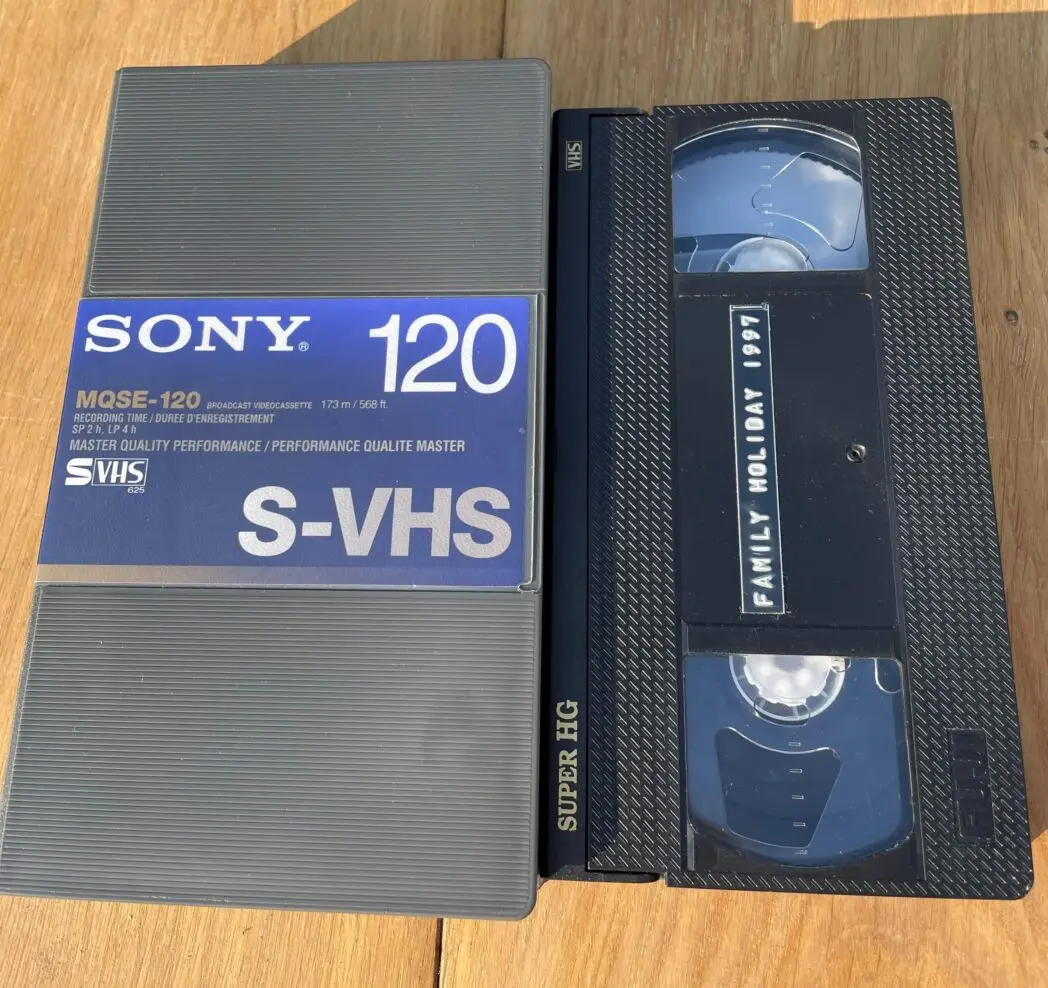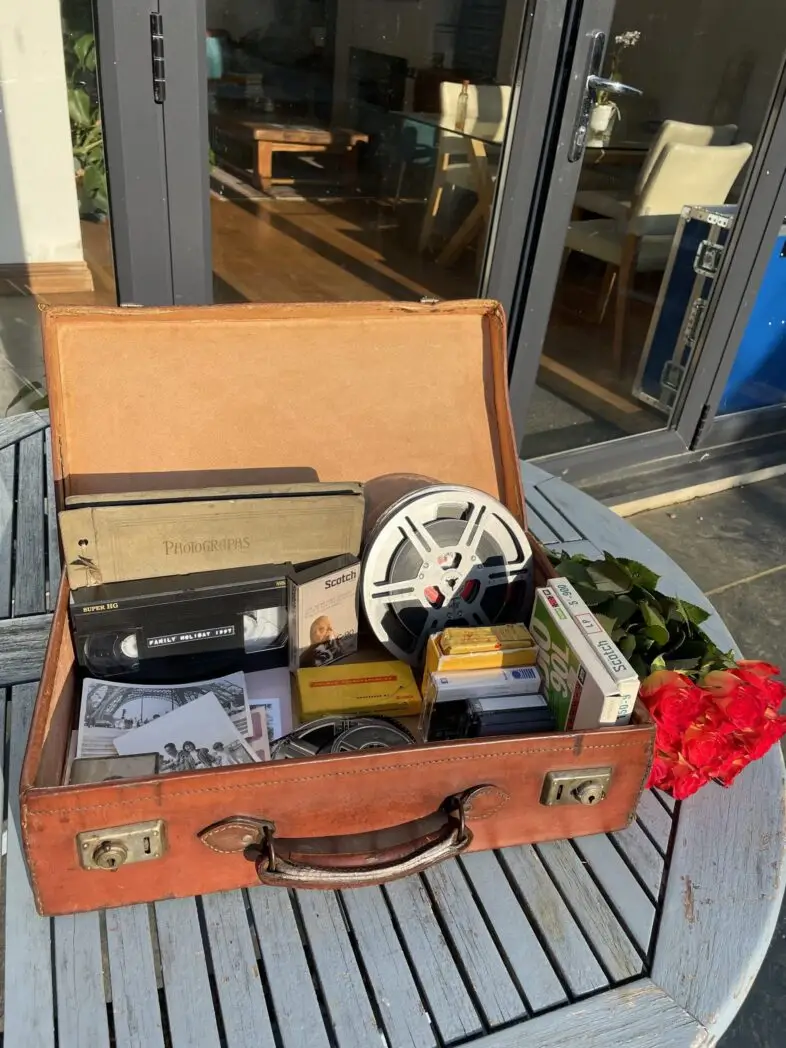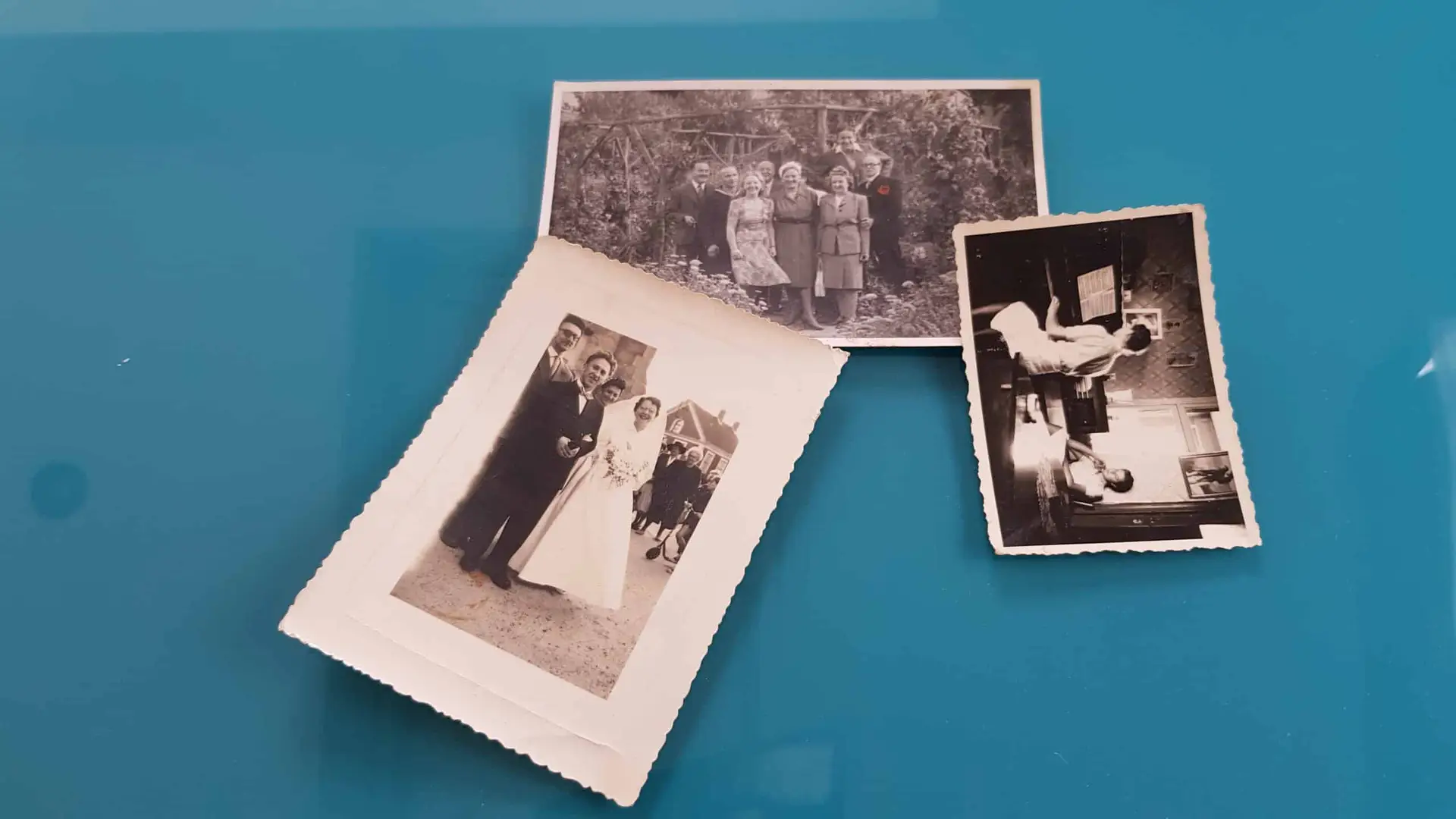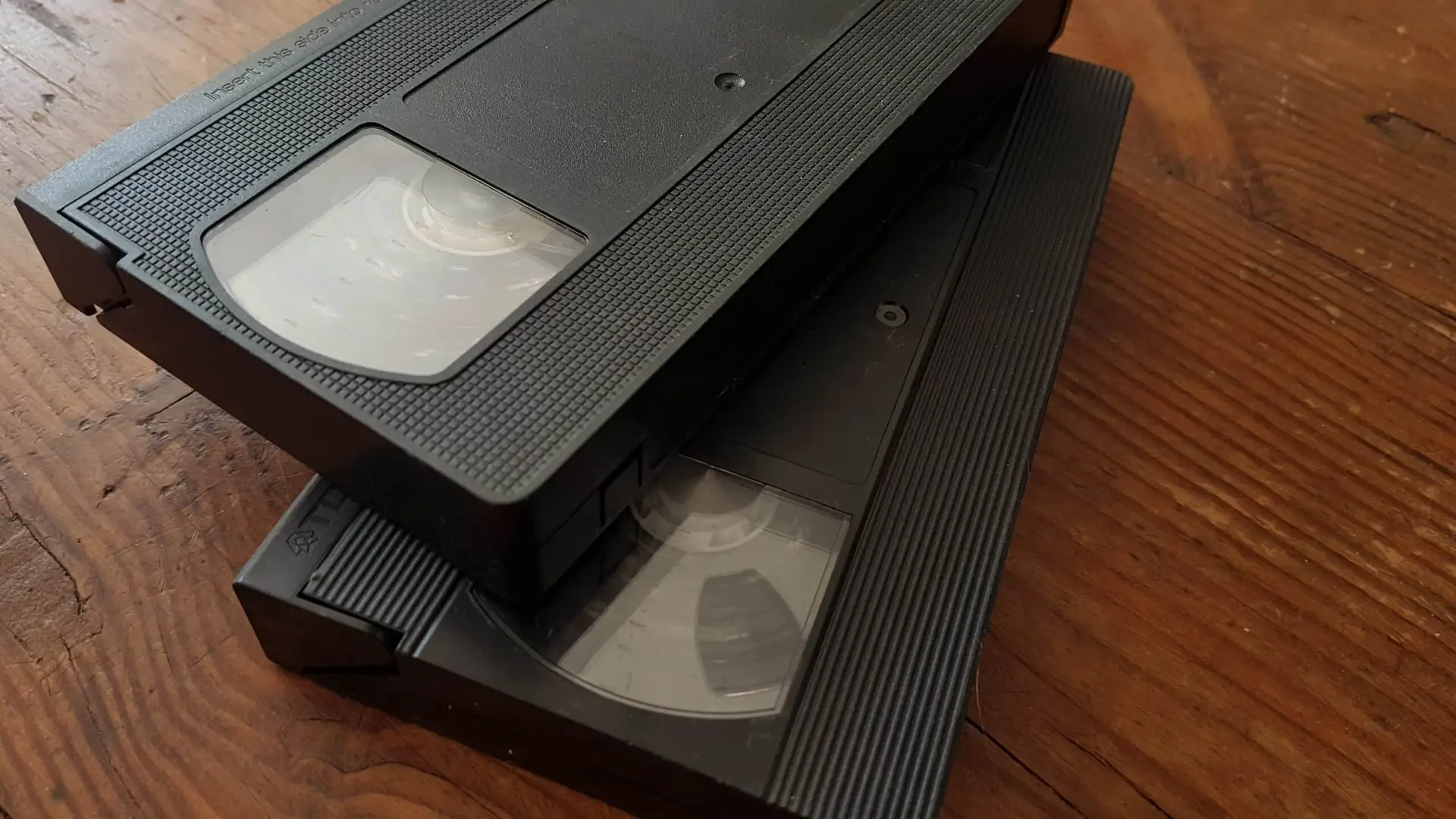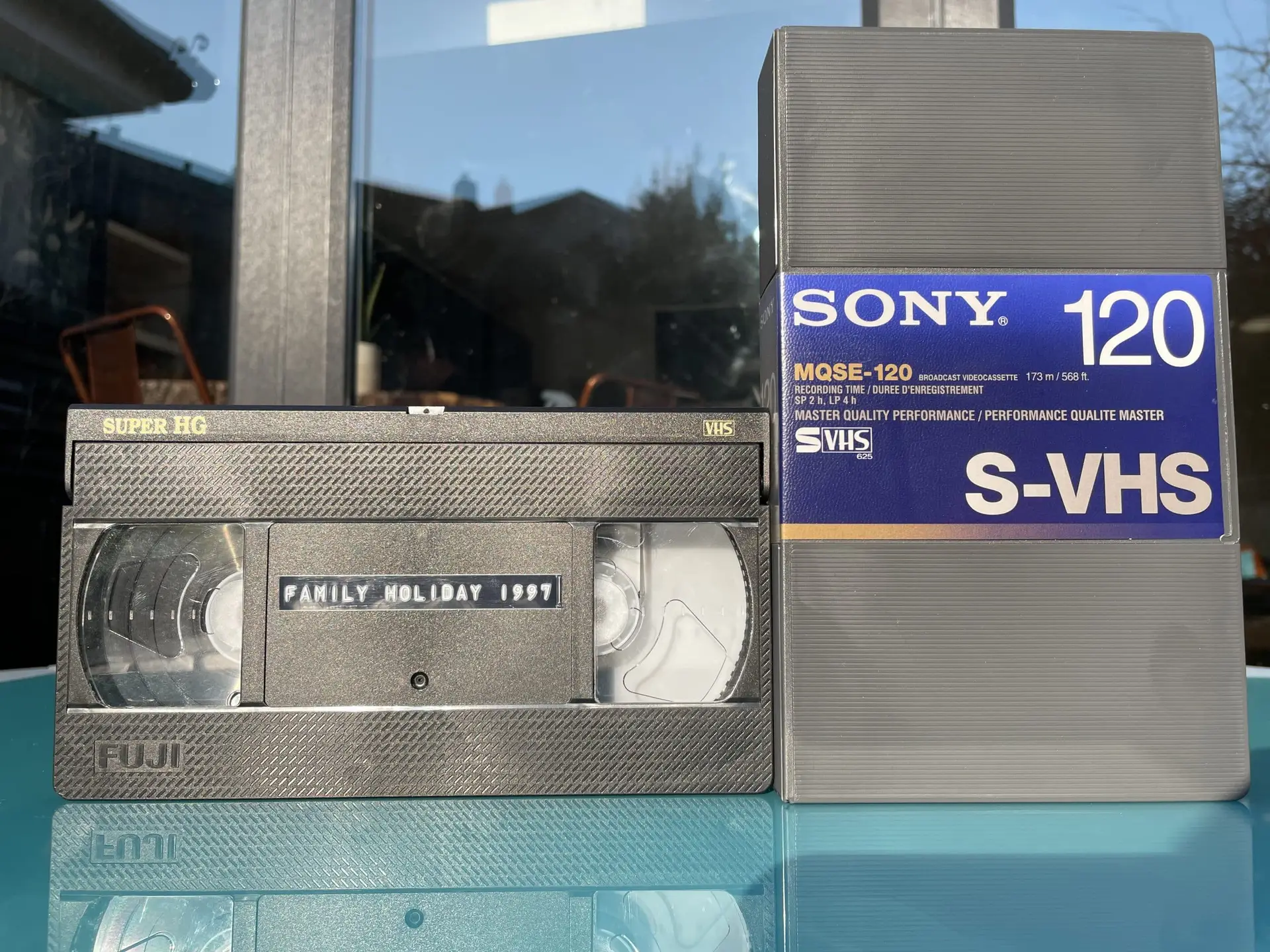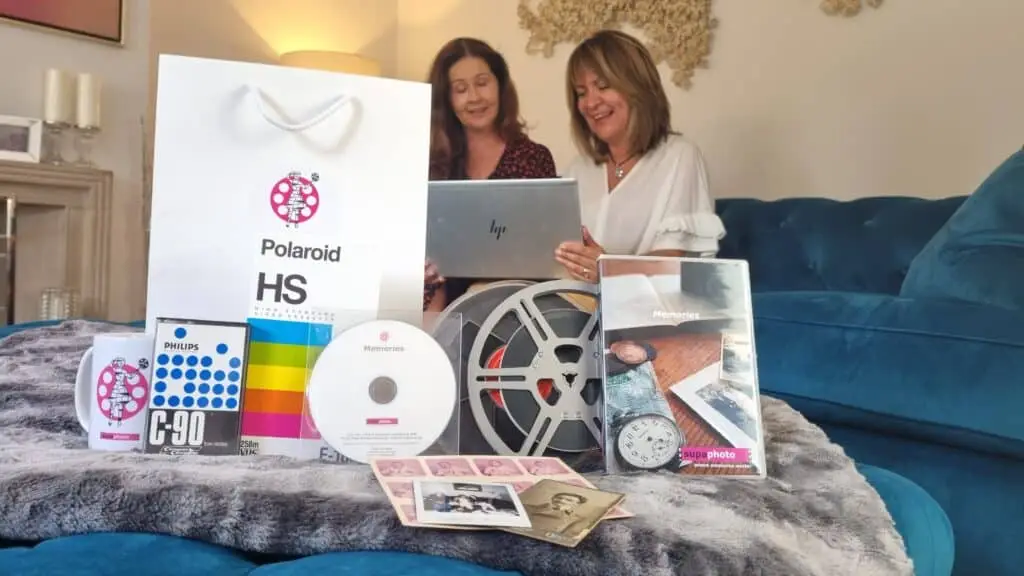Introduction
Before you look for and contemplate a reputable hi8 to dvd service company, consider for a few seconds the origins of hi 8. When the term 8mm arises, cinematic film reels might come to mind; however, there’s more to it – 8mm video cassette formats. During the 1980s, amateur consumers predominantly turned to videocassette tapes for video recording. VHS and Betamax stood as the leading analogue home movie recording choices of the era. Families across the globe embraced camcorders and VCRs to immortalise cherished moments on video.
Size
Nonetheless, a critical flaw persisted in the design of these two video tape formats: their size. The VHS and Betamax camcorders were unwieldy due to the need to accommodate the substantial tapes within. These devices were bulky, often burdening users with their weight and comical appearance, especially when perched on an ’80s dad’s shoulder. This inconvenience prompted the emergence of the 8mm video cassette formats.
Introduction
Eastman Kodak introduced the 8mm video format in 1984, offering a more compact alternative to the larger VHS and Betamax formats. The “8mm” dimension corresponds to the tape’s width, which is 8mm compared to Betamax’s 12mm. This seemingly modest 4mm reduction enabled the creation of the smaller Sony Handycam camcorder in 1985. These size reductions enhanced accessibility and portability, further amplifying the popularity of camcorders. Among the 8mm tape formats, three models emerged, starting with Video8, an entirely analogue system. Following Video8’s successful reception, the second model, Hi8, came into existence.
An In-Depth Look at the Hi8 Tape Format – why convert Hi8 to DVD?
Hi8, the second model among the trio of 8mm video cassette formats, shared analogue characteristics with its predecessor, Video8, except for some digital sound recording capabilities. Hi8 tapes adhered to a familiar design – an 8mm-wide magnetic tape wound around spools housed within a robust cassette shell for tape protection. In essence, the Hi8 format resembled a downsized Betamax tape with superior resolution. When you consider look for a ‘hi8 to dvd transfer near me’, just think how different it might have been if you were stuck with a bulky Betamax machine instead. A Hi8 tape player is light and portable by comparison.
Sony developed the Hi8 tape format as a competitor to JVC’s Super-VHS (S-VHS). Both formats boasted expanded recorded bandwidth for luminance signals, enabling higher-resolution video recording. While the formats paralleled each other in numerous aspects, Super-VHS boasted notably extended recording capabilities.
Tape Durations and Capacity
Hi8 tapes (alongside Video8, Digital 8 8mm formats) supported recording lengths of 180 minutes for PAL in short play mode and 120 minutes for NTSC in the same mode. These recording durations were respectable, yet some consumers leaned toward VHS and Betamax for their lengthier recording potential.
Hi8 and Independent Film Makers
Hi8 tapes were used to create movies, especially in the amateur and independent filmmaking circles. While Hi8 was not as commonly used as professional formats like 16mm or 35mm film, it provided a more accessible and affordable option for filmmakers working on a limited budget.
Hi8 offered a decent level of video quality for its time and allowed aspiring filmmakers to experiment with storytelling, cinematography, and editing without the higher costs associated with traditional film formats. Many early independent films, short films, and student projects were shot on Hi8 due to its relative affordability and ease of use. It’s important to note that as technology progressed, digital formats and higher-resolution options became more popular for filmmaking. Still, Hi8 played a role in enabling creative individuals to bring their visions to life on a more manageable budget.
Cost
During their prime, Hi8 tapes and hi8 tape players were not that cheap. The tapes typically ranged in cost from around £4 to £13 per tape, depending on factors such as brand, tape length, and packaging. The prices might have varied over time and across different regions. Keep in mind that these prices are approximate and based on historical information, as Hi8 tapes are no longer widely produced or sold due to technological advancements and the shift towards digital formats.
The Specification of Hi8 Tapes
Also known as 8mm video cassette tapes, had specifications that contributed to their recording capabilities. Here are some key specifications:
Tape Width
Hi8 tapes are 8mm wide, which is where the “8mm” name comes from.
Before Converting Hi8 to DVD – Understand the Video Recording Format
When you play Hi8 tapes, remember that they use analogue recording technology to capture video signals. The recorded signal was stored as analogue magnetic variations on the tape. Audio Recording Hi8 tapes typically supported linear audio recording, allowing for monaural or stereo audio to be recorded alongside the video. The quality of the audio depended on the specific camcorder’s capabilities.
Video Resolution
Hi8 offered higher video resolution compared to standard 8mm formats like Video8. The resolution was approximately 400 lines, resulting in a relatively clear image for the analogue format.
Recording Length
The length of recording time on a Hi8 tape depended on the tape’s speed and the specific recording mode used. In standard play (SP) mode, a typical Hi8 tape could record around 120 minutes of video. In extended play (EP) mode, the recording time could be extended to around 240 minutes, but at the cost of slightly reduced video quality. You may not think about it, but it will really help the outcome of your hi8 to dvd transfer project.
Cassette Shell
Hi8 tapes came in plastic cassette shells that protected the enclosed tape from physical damage, dust, and other contaminants. These shells also included mechanisms to engage with the tape player’s mechanisms for smooth playback.
Compatibility
Hi8 tapes were designed for use in Hi8 camcorders and decks, but they were generally backward-compatible with Video8 systems. However, using a Hi8 tape in a Video8 device would result in the lower Video8 quality and resolution.
Playback and Recording Speed
When you play Hi8 tapes, they typically used a tape speed of 16.8 mm/s (SP mode) or 8.4 mm/s (EP mode) for recording and playback.
Colour Encoding
Hi8 tapes used the YUV colour encoding system to store colour information separately from luminance (brightness), which contributed to the relatively better colour quality compared to other analogue formats.
The End of Hi8 –
Eventually, the Hi8 tape format was overshadowed by more advanced digital video recording formats. Presently, most consumers have transitioned away from Hi8 tapes. However, many still possess vintage tapes from the ’80s and ’90s containing treasured family memories. It’s important to note that Hi8 tapes were part of the transition from analogue to digital formats, and their specifications represented an improvement over earlier formats like Video8. However, as digital formats like MiniDV and later formats became more popular, Hi8 tapes and camcorders eventually faded from the mainstream market.
If you have Hi8 tapes, video8 or digital8 and mini dv, we advise you convert Hi8 tapes to DVD. Here at Supaphoto – a reputable company with over twenty years in this field for such services. They’ll have professional decks to play Hi8 tapes. While the Hi8 tape format marked a significant step in tape recording evolution, it’s time to usher your Hi8 tapes into the digital realm, allowing you to convert hi8 tapes to digital and relive those super special moments for many years to come.


